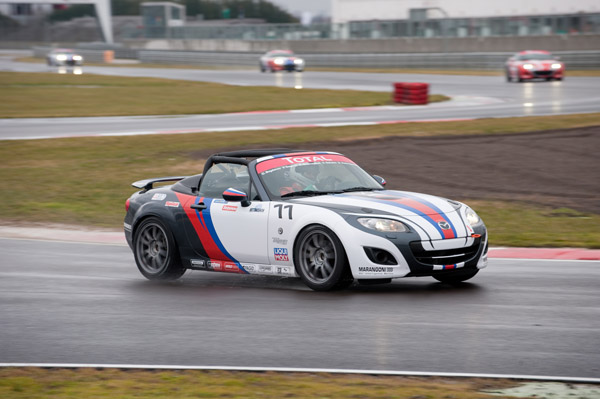The story of the appearance of racing cars “Silver Arrows”
 The situation was desperate. Before the start of the international race, “Eiffelrennen” remained quite a bit when the Rennlighter (manager, as we would say now) of the Mercedes-Benz team Alfred Neubauer heard that his cars weigh almost a whole kilogram more than the 750 kg limit.
The situation was desperate. Before the start of the international race, “Eiffelrennen” remained quite a bit when the Rennlighter (manager, as we would say now) of the Mercedes-Benz team Alfred Neubauer heard that his cars weigh almost a whole kilogram more than the 750 kg limit.
It was urgent to make the cars lose weight, because there was no place to retreat: “Mercedes-Benz” has already missed the Grand Prix of Monaco and perhaps the most popular in Germany “Afusrennen”. But they promised the Führer that German racing cars already in this, in 1934, would be the fastest in the world.
Picture of the famous “Silver Arrow”
Picture of the famous “Silver Arrow” The decision came when before the start there was an hour and a half. Neubauer ordered … to scrape paint off cars! So for the first time in its history, Mercedes Benz went to the start not in the traditional white German colors, but in the sparkling virgin purity of the aluminum skin. Manfred von Brauchitsch on one of these machines won this race, far exceeding the previous record, and Mercedes immediately dubbed “silver arrows.”
This story has long become a textbook. Most often it is remembered when they talk about the second half of the thirties – the time of the overwhelming advantage of the German teams. And this advantage is usually explained by government subsidies.
No doubt, the German government did not spare the money – the construction and testing of cars was fully funded from the Reich treasury, and the creator of the most successful car was waiting for a prize – 40,000 Reichsmarks. However, say, the Italian factories enjoyed the support of Mussolini.
The secret of the Germans was different. Before them, car racing was a lot of lovers in general. By trial and error, almost blindly, more or less successful models were created. In Germany, in 1933, motor racing (and not only the design of racing cars!) Was put on a strictly professional basis.
In Stuttgart, a special unit was created, led by Rudolf Uhlenhout. At his disposal was a whole design headquarters, a test department led by Fritz Nallinger and the racing team itself – the diocese of Neubauer. The “father” of the new car was Hans Niebel. Based on the rich sports experience and “Daimler”, and “Benz”, he developed a general concept – the car frame design, the classic layout with independent wheel suspension and 8-cylinder in-line engine with a compressor.
The first “silver arrow”, the “W25” model, surpassed French and Italian cars. However, the unique rear-engined “Auto-Union” was still stronger – he won the European Championship twice in three years. The weak points of the Mercedes were the suspension and the frame. And by the season of 1937, under the leadership of Max Seiler (Nibel died at the end of 1934) a new car was prepared – “W125”.
Max Wagner designed a completely new chassis. The sturdy frame was welded from thin-walled pipes of oval section, which significantly increased its torsional rigidity. A novelty was the rear suspension “De Dion” with shock absorbers and torsions, which has a progressive characteristic. The course of the front and rear suspension increased almost tripled. All wheels were supplied with Lockheed hydraulic brakes. Another very curious feature is wheels of different diameters. German engineers remembered the dawn of the racing race when the diameter of the rear wheels was much larger than the diameter of the front wheels. Then they forgot about it, and on the “W125” model, the rear wheels not only became taller, but also wider than the front wheels. Now it surprises nobody even in sports cars.
The engine of the silver arrow was outstanding from several points of view. Albert Hess designed it in the Daimler aviation tradition. The row “eight” with four valves per cylinder, a working volume of 5660 cm3, a camshaft in the cylinder head and a compressor “Rute” developed an incredible 592 liters. with. With this engine, the Mercedes-Benz-W125 has remained the most powerful Grand Prix car for over 40 years!
Such power provided the car with a curb weight of 1097 kg, which is quite comparable with today’s “Mac-Laren” – 321 km / h. But this engine was also distinguished by its fantastic voracity – it required 250 liters of a hellish mixture of methyl alcohol, acetone, nitrobenzene and ether for one hundred kilometers of a journey. Therefore, the 300-liter fuel tank had to be filled three or four times during the race! But despite this “silver arrow” number two has become one of the most successful racing cars of the company. Rudolf Caracciola returned to Mercedes-Benz the European champion title, and the invincible trio, which also included von Brauchitsch and Hermann Lang, won almost all the big races of 1937.
And the next season, cars of a new, three-liter formula appeared. And the “silver arrows” continued their victorious flight along the European and African routes, becoming the most successful racing cars of the thirties.


